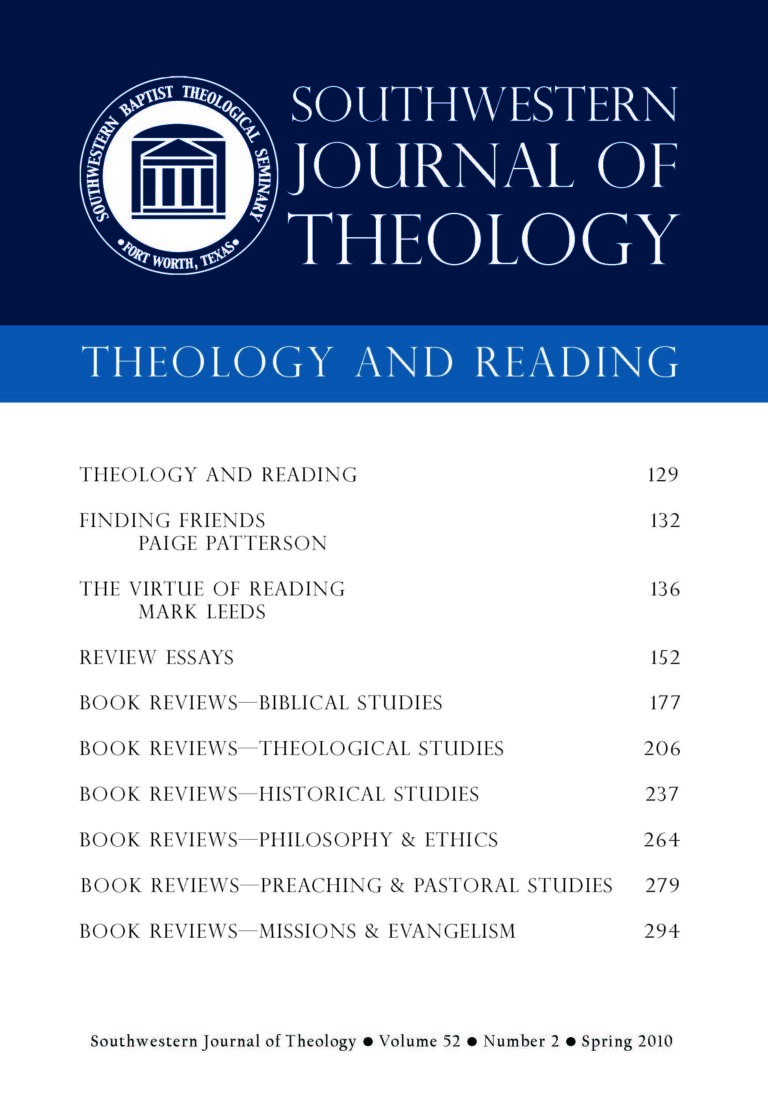
Theology and Reading
Southwestern Journal of Theology
Volume 52, No. 2 – Spring 2010
Managing Editor: Malcolm B. Yarnell III
By David E. Wilhite. New York: Walter de Gruyter, 2007, 232 pages. Hardcover, $123.00.
This monograph is the revision of Wilhite’s doctoral dissertation at the University of St. Andrews. He is currently assistant professor of theology at George W. Truett Seminary. This work is not strictly theological. Rather, it offers a socioanthropological analysis of the identity of Tertullian as a Christian writer living in early third century Romanized North Africa. Wilhite introduces postcolonialism as a new methodology in patristic scholarship and argues that since he was an indigenous African who had to live as a citizen of a Romanized colony one should read Tertullian not from the culture of the colonizers but from that of the colonized. The thesis of this book is that one has to understand Tertullian as an African who refused Romanization in both North African society and his church. Tertullian’s writings were not merely meant to promote Christianity to his nonChristian neighbors or to implore a pagan Roman government for fair treatment of the Christians in North African. Nor was Tertullian the representative of Latin Christianity in defending the apostolic faith against heresies. Tertullian’s unique contribution was not his commitment to the foundation of a European theology but in challenging his audience to see the superiority of Africanness over Romanness in cultural and ecclesiastical life. Readers should not read their European cultural and ecclesiastical presuppositions into Tertullian but rather treat him as a patristic writer whose works reflect his strong African identity.
In order to prove Tertullian’s Africanness, Wilhite presents a reconstructed biographical report which rejects the traditional view of Tertullian’s life based on Eusebius and Jerome. Tertullian is introduced as a Christian rhetorician adept at using juristic images and pagan philosophy for his argument rather than being presented as a Roman jurist or Stoic philosopher (or at least a student of Stoicism). In addition, Tertullian is portrayed not as a presbyter but as a layman. Wilhite applies postcolonial perspectives to Tertullian’s social, kinship, class, and ethnic identity. In particular, Wilhite identifies three social classes in the day of Tertullian: Roman colonizers, indigenous Africans, and new elites—Africans who assimilated themselves to Roman culture. Wilhite contends that Tertullian belonged to the indigenous African class.
Interestingly, Wilhite does not deny that Tertullian greatly influenced the development of Latin theology. Nor does he support some contemporary African theologians’ anachronistic presentation of Tertullian as a modern Tunisian thinker. Nor does he fail to recognize that Tertullian’s colonized North Africa was part of the Graeco-Roman world. However, Wilhite’s conclusion is worth noting: A contemporary reader could easily take “the notion of a ‘Graeco-Roman culture’” as “a pseudonym for early ‘Western civilization’” and ignore Tertullian’s colonized African context (191).
The value of this work is not that Wilhite points out Tertullian’s antagonism against the Romanized ecclesiastical and spiritual life, which others, including the Reformers, already noticed, but that he captured Tertullian’s social and cultural antagonism against the Romanization process of North Africa from the patristic writer’s own words. Wilhite successfully demonstrates from primary sources that Tertullian actually rejected the Romanization of his North African life as a whole. Just as Luther was aware of his national and cultural distinctiveness from Rome during the Reformation, it is not surprising that Tertullian developed a keen awareness of his ethnic and cultural identity distinct from the identity of the Roman colonizers—or that of the new elite classes—all the while he carried out the deconstruction of Romanized church life. Nonetheless, one has to ask Wilhite which agenda – theological or cultural independence—must be the understood as Tertullian’s primary concern in his “criticism of Romanism” (27). The next question might be how one can reinterpret Tertullian’s theology in light of this social anthropological re-reading of his life and writings.





